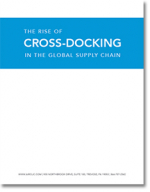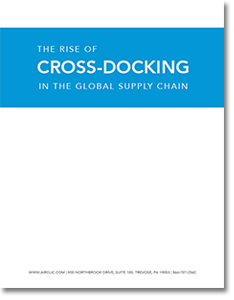The Rise of Cross-Docking in the Global Supply Chain
Faster delivery expectations eliminate the “luxury” of warehousing and increase emphasis on the “perfect order”
The rise of cross-docking
Whether it’s car parts on their way to the dealer, perishable foodstuffs being delivered to a restaurant, or supplies en route to a pharmacy, getting products to consumers on time and in great condition is the single most important task of suppliers and the customers they serve.
While pursuit of the “perfect order” will always be a daily challenge, today’s global marketplace means that companies are under increasing pressure to quickly fulfill product orders across complex networks – and to do so without making costly errors that might drive business away.
This has led to a rise in the use of cross-docking, and the need for an automated system that ensures the supply chain is not sacrificing accuracy for speed.
Cross-docking is commonly defined as the process of unloading products or materials directly from one transport vehicle (truck, train, etc.) to another without the intermediary step of being placed in a warehouse or storage facility between transit stops. First seen in practice in the 1930s, crossdocking has become increasingly common across industry supply chains as a way to cut costs and increase speed of delivery.
To successfully implement and manage cross-docking, it is important to recognize some of the key challenges and associated solutions that go hand in hand with it.
What’s Related

Favorites





